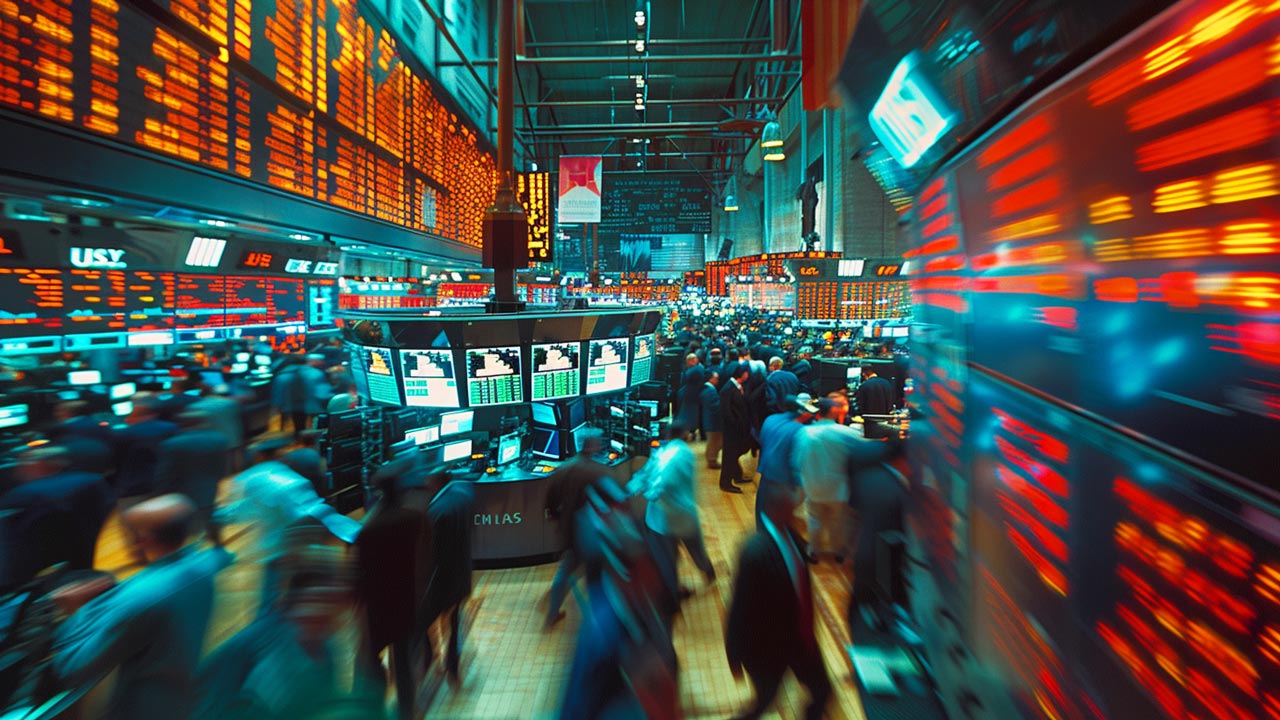Does the Fed Create Money?
Michael Pento’s Market Commentary
Certain deflationists have recently gone on record saying that the increase in the Fed’s balance sheet is meaningless with regard to creating inflation because our central bank can’t print money, it can only create bank reserves. The problem with their view is that it both disregards the definition of money and ignores the process of creating bank reserves.
Money is commonly defined as “a medium that can be exchanged for goods and services and is used as a measure of their values on the market, including among its forms a commodity such as gold, an officially issued coin or note, or a deposit in a checking account or other readily liquefiable account.” The Fed creates a “readily liquefiable account” when creating excess bank reserves, so it is also creating money. Since inflation is properly defined as an increase in the money supply, the Fed unquestionably creates both money and inflation when it creates reserves.
The deflationists’ error is to suppose that because the amount of currency has not grown, the money supply hasn’t grown. But the Fed never creates currency – all the printing is handled by Treasury; instead, it creates bank deposits which are held at the Fed. In ignoring this “base money,” the deflationists make no distinction between having the Fed’s balance sheet at $800 billion or $3 trillion. Doing so is a huge mistake for both making investment decisions and predicting asset price levels.
In short, for deflationists to be correct, they must contend that only money which is currently in circulation can be considered inflationary, i.e. lead to rising prices. Therefore, they must also believe that all increases in demand and time deposits should not be included in the money supply and should not be considered inflationary. This isn’t just wrong, it’s grossly wrong.
Not only do the Fed’s monetary additions increase the money supply, but the effect can be vastly multiplied through the fractional reserve system.
Also, the process of creating bank reserves always first involves the purchase of an asset by the central bank. The Fed issues electronic credits to banks in exchange for bank assets, including Treasuries. Its purchases drive up the demand for those assets, bringing about rising prices. In fact, Bernanke has clearly stated that the purpose of his “quantitative easing” program is to raise the rate of inflation, which in his mind is too low.
What the Fed is accomplishing is a reduction in the purchasing power of the US dollar. It creates inflation by vastly increasing the money supply and thus, lowers the confidence of those holding the greenback. If international confidence in the dollar is shaken, most dollar-based asset prices will increase — with the exception of US debt.
Deflationists also ignore the rise in prices that is occurring because of the potential insolvency of the US government. It is not dissimilar to what happened to Enron shares. Once the accounting scandal broke, the purchasing power of Enron shares plummeted. It was not because of an increase in the number of shares outstanding, but because of an epiphany on the part of investors that the company was totally bankrupt. Logically, shares representing a stake in a doomed company lost all of their value. Likewise, aggregate prices will soar if global investors lose confidence in the dollar due to the realization that the US is incapable of servicing its debt.
Whatever the deflationists may claim about the money supply, the objective indicators are not looking good for Uncle Sam. The dollar’s decline is abundantly evident when compared to gold, commodity prices, other currencies, real estate, and the list goes on. The national debt now stands at over $13.7 trillion, some 94% of GDP. Either due to an insolvent currency backed by a bankrupt nation or because of the Federal Reserve’s endless money printing, I have no doubt that the deflationists have it completely wrong.



 Cocoa prices have dumped since rocketing to a dramatic peak last month as an El Nino cycle winds down and traders rush out of the illiquid market. For now, depreciating fiat currencies are still keeping the cocoa price still far above its 2023 levels. Coffee has had a similar rise and subsequent correction — but now, inflation and other factors are conspiring to […]
Cocoa prices have dumped since rocketing to a dramatic peak last month as an El Nino cycle winds down and traders rush out of the illiquid market. For now, depreciating fiat currencies are still keeping the cocoa price still far above its 2023 levels. Coffee has had a similar rise and subsequent correction — but now, inflation and other factors are conspiring to […] California’s government bet that they knew better than the free market. And now millions are paying the price. The story begins in 1919, when the city of Berkley, California instituted legislation setting aside districts that would only allow the construction of single-family housing. The idea spread, and soon much of California’s urban areas had adopted the zoning policy. Today, approximately 40% of the total land in Los Angeles is […]
California’s government bet that they knew better than the free market. And now millions are paying the price. The story begins in 1919, when the city of Berkley, California instituted legislation setting aside districts that would only allow the construction of single-family housing. The idea spread, and soon much of California’s urban areas had adopted the zoning policy. Today, approximately 40% of the total land in Los Angeles is […] The yen was once known as a safe-haven currency for investors to protect themselves when broader markets are shaky or other currencies are dropping, but those days are numbered. A stable government and consistent (and low) interest rates have been some of the driving factors, but it’s the unwinding of that ultra-low interest rate policy that will be the yen’s “safe […]
The yen was once known as a safe-haven currency for investors to protect themselves when broader markets are shaky or other currencies are dropping, but those days are numbered. A stable government and consistent (and low) interest rates have been some of the driving factors, but it’s the unwinding of that ultra-low interest rate policy that will be the yen’s “safe […] Whenever an election year rolls around, domestic manufacturing becomes a more central theme of discussion. Candidates from both sides, who seem to disagree on almost everything else, never waver in their commitment to auto manufacturers in Detroit and the steel industry. Republicans and Democrats never forget to remind the American public that they will try […]
Whenever an election year rolls around, domestic manufacturing becomes a more central theme of discussion. Candidates from both sides, who seem to disagree on almost everything else, never waver in their commitment to auto manufacturers in Detroit and the steel industry. Republicans and Democrats never forget to remind the American public that they will try […] The wizards at the Fed and US Treasury have been forced to acknowledge that their “transitory,” inflation is, in fact, quite “sticky.” And with the inflation elephant now acknowledged by the circus of high finance, Treasury yields keep inching up, recently reaching 4.7% — the highest since November. The Fed is stuck: It needs to raise interest rates to tame inflation and […]
The wizards at the Fed and US Treasury have been forced to acknowledge that their “transitory,” inflation is, in fact, quite “sticky.” And with the inflation elephant now acknowledged by the circus of high finance, Treasury yields keep inching up, recently reaching 4.7% — the highest since November. The Fed is stuck: It needs to raise interest rates to tame inflation and […]
Leave a Reply